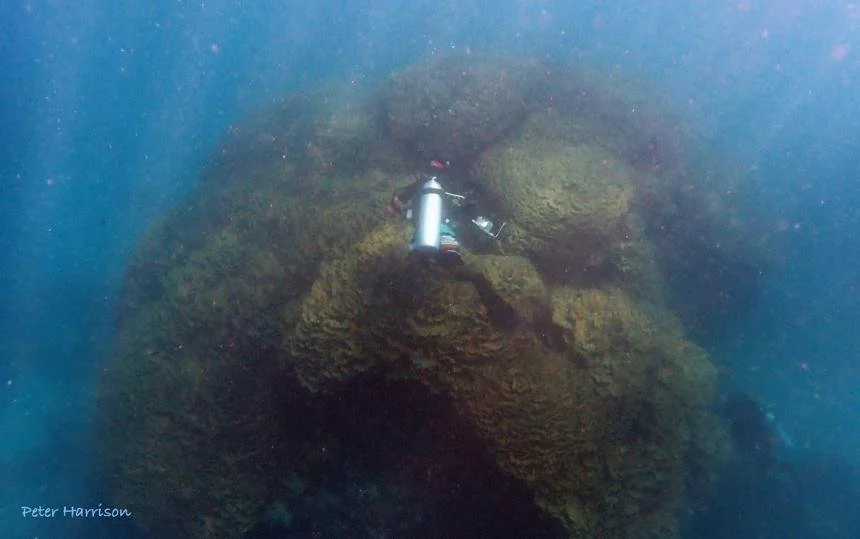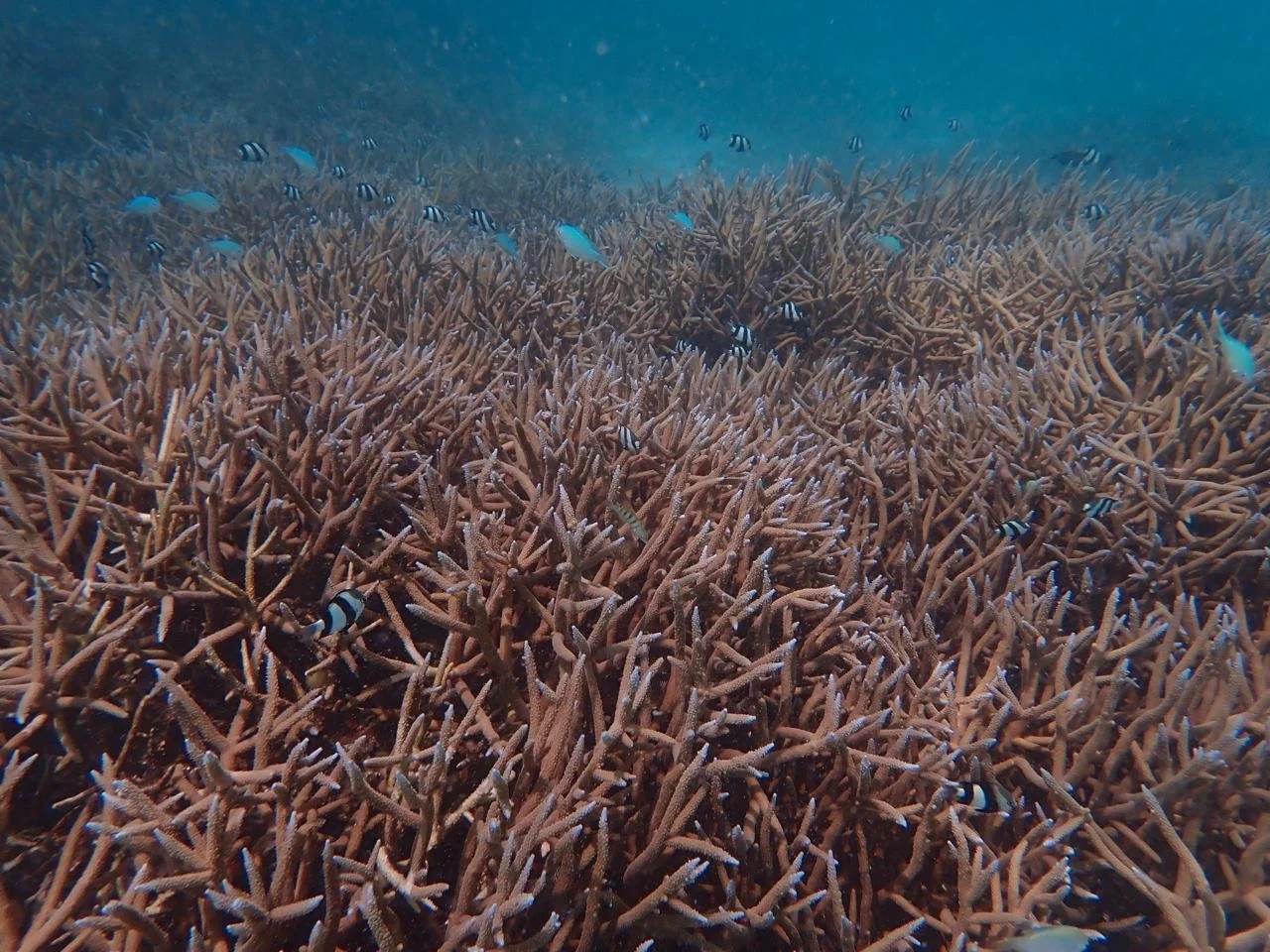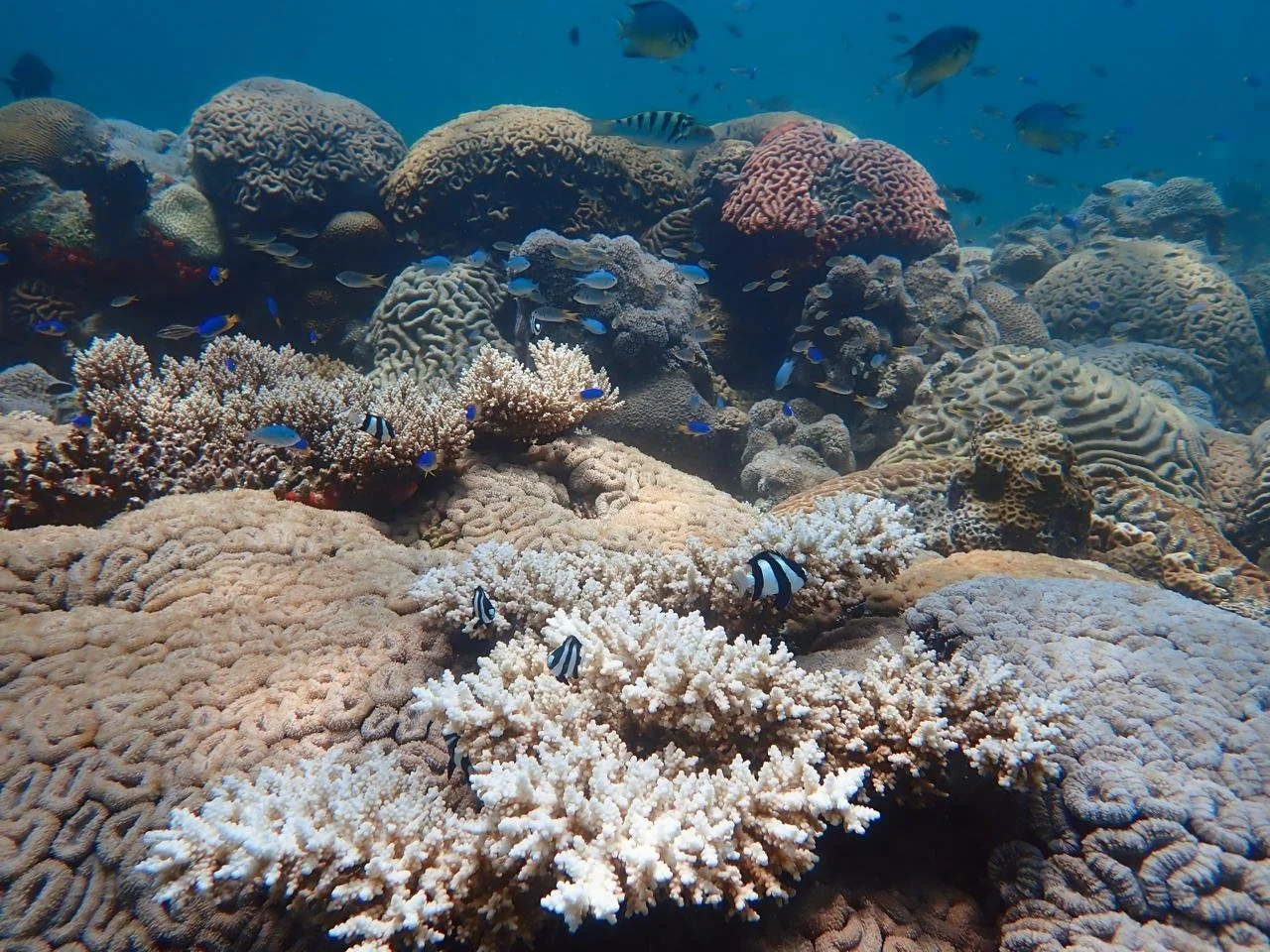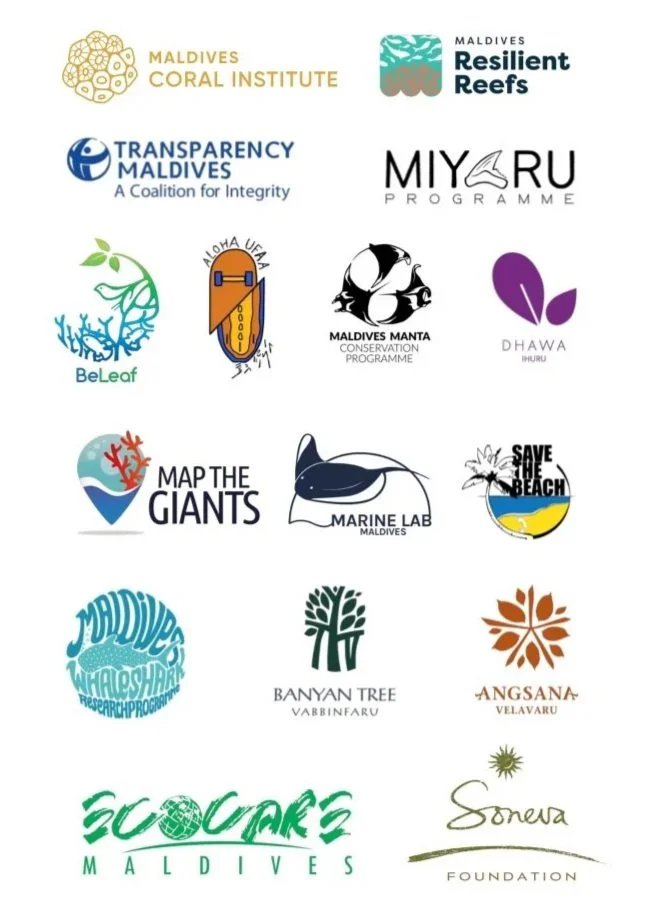STATEMENT - Call for Protection of Goidhoo Atoll Marine Ecosystem
We, the undersigned stakeholders, call for the protection of Goidhoo Atoll marine ecosystem, and endorse the following statement, initially released by Maldives Coral Institute on 18th August 2025. By endorsing this statement, we collectively reaffirm our commitment to protecting Goidhoo Atoll’s unique marine ecosystem for the Maldives and the world.
On 27th May 2025, The Ministry of Tourism and Environment announced that 14.28 Hectares from an “area on Goidhoo reef” has been added to the list of islands and lagoons designated for tourism development. The broader Goidhoo lagoon already includes 4 protected areas; The Corbin Wreck, B. Innafushi Area, Goidhoo Koaru Area and Mathifaru Huraa Region. The lack of information regarding the location of the area for reclamation makes it difficult to assess the potential adverse impacts the reef and these 4 protected areas may be subjected to. Reclamation and dredging are known to affect coral reefs and marine ecosystems through increased sedimentation and turbidity, displacement of marine species and alteration of hydrodynamics and in many cases, these negative effects are irreversible.
We also observe with concern that consecutive governments are consistently encroaching on environmentally protected areas and areas designated as biosphere reserves, with no regard to environmental safeguards, laws and regulations governing protected areas. For example, The last mangrove in Kaafu Atoll, situated in Huraa, has been undermined and endangered by reclamation. Multiple marine protected and sensitive areas in Addu Atoll Biosphere Reserve were subjected to irreversible degradation by reclamation in 2023.
Based on the aforementioned observations and reasons, we are deeply concerned about government plans to dredge and reclaim the Goidhoo lagoon for resort development and calls to for protection of its exceptional marine environment. The Atoll of Goidhoo in Maldives supports remarkable corals, some of them hundreds of years old, that have somehow survived bleaching and defied widespread national and global losses. These natural assets are nationally and internationally important and irreplaceable.
Why protect Goidhoo Atoll?
Giant Corals
There are multiple coral colonies of extraordinary size and age in the Goidhoo lagoon. These corals are well known to local fishers and used as navigational aids. Maldives Coral Institute and Map the Giants have so far identified and measured 12 giant corals from several genera, including Porites, Turbinaria and Pavona. The corals measure between 15 and 37metres in their maximum circumferences and are conservatively estimated to be 300 to 500 years old. With global marine heatwaves and bleaching events becoming more frequent over the past few decades, it is uncertain whether corals will have the capacity to reach this size or age ever again. These corals are intact, fully alive and have survived three massive coral bleaching events. They supply resilient larvae to the entire reef system and possibly to other regions, and may well hold the key to coral resilience.
High Biodiversity and Live Coral Cover
Diving surveys in Goidhoo Atoll revealed extensive thriving coral ecosystems on the lagoon floor, covering many square kilometres. These areas are dominated by a wide variety of corals, representing more than half of all coral species occurring in Maldives, with living coverage regularly in the range of 50-80%. These levels of coral health are exceptional not just for Maldives, but worldwide. Goidhoo Atoll’s reefs look remarkably similar to images taken by Hans Hass’s 1950s expedition, indicating that the atoll’s reefs represent an almost unprecedented survival of past coral conditions. This resilience makes them both nationally and internationally significant and of exceptional conservation importance.
High thermal Resilience
Maldives Coral Institute have collected and analysed temperature and coral bleaching data from Goidhoo Atoll over multiple years, and can confirm that the reefs show strong thermal resilience.
In the most recent global marine heatwave, peak daily temperatures reached 32.7°C in the Atoll, with hourly peaks of up to 35°C. The recognized bleaching threshold is 30.5°C for Maldives- however, while 74.8% of coral colonies in the area bleached, only 38.3% died and 49.3% exhibited partial or full recovery. Historical maximum temperatures in Maldives over the last 30 years was 32.98°C, further confirming that corals in this area can withstand exceptionally high temperatures.
Benefits of protection are irreplaceable
Protection of Goidhoo Atoll’s marine environment and natural beauty will be far more beneficial its’ communities than revenue from resort development. The high-end local island tourism that the inhabited islands of the atoll currently enjoy is owed to their exceptional natural assets, which once destroyed, cannot be regained. The dredging and reclamation of any area in Goidhoo Atoll will undoubtedly cause environmental and reef degradation, undermining livelihood options, income and human wellbeing of its communities. With protection, the island coastlines will be better defended, water quality higher, the tourism assets more attractive, and marine food sources will be more secure for the future.
Goidhoo Atoll’s resilient corals will act as sources of natural replenishment to other Maldivian reefs, subjects for research into coral resilience mechanisms, a source of corals for propagation for restoration, and a source of wonder for visitors.
Figure 1: One of Goidhoo Atoll’s giant corals. This Turbinaria is over 20 metres long and several hundred years old.
Figure 2: Goidhoo Atoll supports areas of coral that are little different from photographs taken in the first surveys of the Maldives in the 1950s. These remarkable, resilient corals are unexpected survivors - a window to the past and hope for the future.
Demands & Calls
In light of the ecological importance and resilience of Goidhoo Atoll, and in recognition of the threats posed by proposed dredging and resort development, we the undersigned demand the following:
Governance and Accountability
Stop all dredging, reclamation, and resort development in Goidhoo Atoll until independent, transparent environmental and social assessments are carried out.
Disclose all government plans, contracts, environmental studies and proposals received by the government relating to tourism development in Goidhoo Atoll.
Ensure proposed development decisions are preceded by a thorough, participatory, and transparent consultative process including all the relevant stakeholders. Guarantee Prior and Informed Consent of communities and stakeholders that could be potentially impacted by the project.
Community Rights and Livelihoods
Prioritize community-driven eco-tourism as sustainable alternatives to large-scale resort development to ensure fair and equitable sharing of economic benefits.
Recognizing that economic benefits of the ecosystem are also important for the community, develop a community-led model that strengthens conservation while providing sustainable income.
Recognize and safeguard the ecological services of natural ecosystems and protected areas such as coastal protection, carbon storage, and fisheries productivity as the foundation of community well-being and economic value.




